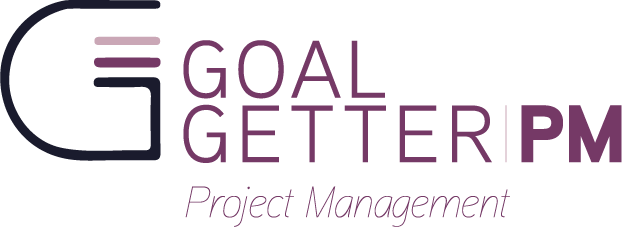This post is the first follow-up to “Common Project Management Mistakes: Don’t Screw Up Your Projects in 2017!” And I am so glad I am starting with this mistake. I’m back on track with the lessons! Stay tuned every week! So let’s start with the statement: “I think I know what I want.”

Some projects can start as an idea that never really made it to the end. Sometimes, the end result comes to mind without a thorough investigation on all the steps that go between. I have managed, or have been on the project team for so many industries and business sizes that have neglected the start-to-finish process. I can tell you with pure confidence that this is an obstacle any project might face. This is why Goal-Getter Project Management has encouraged the use of project charters. Project Charters help establish the authority of the project manager, and the existence of the project. This charter document also summarizes the “why” of the project, goals, milestones, the project team, budget, assumptions, and constraints. The reason why knowing what is expected from the project helps to better establish the boundaries (scope) of the project.
Before I launched Goal-Getter PM, I had a lot experience with many companies that just said, “Well, we think this is what we want it to look like in the end.” Honestly, that is a great start. However, I’ve seen some companies jump right into doing the work without properly planning the many components of the project. Jumping right into the action without planning will cost an organization more money throughout the various cycles of the project. When executives of companies do not examine what needs to be done by project management standards there are nine areas that can all contribute to inflation of costs.
When I meet with a potential client for a discovery call, and it seems like their desired result still seems ambiguous; I ask them to close their eyes and navigate me through their vision. If the end result of the project is an event, I ask them to tell me what they see when they envision the event day. Using the notes that I take from the details of those visions is how I start to define the requirements and the scope of the project. I also walk through their vision as an audience member. If the vision is a product, I take notes and use those details to establish requirements that align with their vision. This is a crucial game changing exercise to overcome how to think about what you want your project to do for your organization and more importantly, your customers.
I present to you four crucial game changing exercises to begin thinking about what you want your project to do for your organization.
“I Think I Know What I Want”
Your job as a business owner is to solve other’s problems. So if you’re starting with the statement, “I think I know what I want”, you need to take a step back and think about what problem your project solves for your target customers. What do your customers want? When you keep finding and solving problems for your customers it increases the probability that they will continue to seek your help first before anyone else in your industry.
Know Your Approach
Some people like to start with the end in mind. Others like to think of all the steps that lead to the desired result. Either way, both of these processes need to be considered at the beginning of the project. You need to know what the end is going to look like and really make a true effort to think about all the work that will need to be done to achieve the goals around the project. A breakdown of the necessary steps to create the desired end results will also help to structure the schedule. When you start to list the tasks, you may also establish an estimate of how long all the activities will take which provides the schedule baseline.
When you start with the end result in mind, you are actually initiating the project scope components. You will want to make sure to break down the major action items that will lead up to that end result. The project scope is “the work performed to deliver a product, service, or result with the specified features and functions” (PMI, 2013).
For Every Feature, Discover the “Why” Behind It
Most project ideas are built with a strategy behind them. What problem do you solve? When you decide what your project is, you need to come up with 5 reasons that they address objectives and the problems those objectives address. When I first found this method I asked myself “why”, and it was in that instant, it clicked. Asking yourself 5 “Why’s” helps to address root causes of the problem you are trying to address; it also helps to establish the requirements for the end result (deliverable).
When you start thinking about the ‘Why’s” in business, it goes back to your goals, monetary or otherwise. When you start breaking down your “why’s” on a micro-level you actual establish intent. You may say that one of your “Why’s” is so you can continue to provide for your family. This makes the project more personal and actually reminds you of why you took on entrepreneurship in the first place.
Asking your self why also helps to solidify intent. If you want to make money, that means you may not be thinking about the problem you want to solve. If your intent is to boost trust in your brand so people see you as the source of truth when they have a problem they know you can solve… now you’re on to something.
Other “Why’s” may include a problem your customers have expressed as an enhancement, a new release, a new product, a new event series, etc. Projects address a problem.
What’s Your Budget?
I’m gonna be honest, there are some people that have it, and some that don’t. Neither one is a problem as long as you do not begin to execute the project until the budget for it is already in the bank.
For those who have the budget for the project, you need to understand to use it wisely. Really use project management tools and techniques to stay on budget with what you have. You never want to be in a position where you “Rob Peter to pay Paul”. Sticking to the budget is how you begin to understand the continuity of ROI for your project.
For those that don’t have the budget, you need to leverage another product or aspect of your business to acquire the funds, do not begin execution until you have the budget for the project in the bank. You can even pitch a fundraiser. CAUTION: Do not depend on others folks’ money! Donations are voluntary, you need to sell a product instead of asking other people for their time or money and expect a 100% return. Save yourself some time and find the leverage for the budget in other areas of your business. Make an enhancement and increase your price on a product… be creative.
FOLLOW THIS POST! I expose every project flaw on a micro-level; every company size makes the mistakes I will help you correct. These individual posts will provide some strategies to remove the headlined roadblock for the project, so stay tuned!
© Brianna Sudduth and GoalGetterPM.com, 2017. Unauthorized use and/or duplication of this material without express and written permission from this site’s author and/or owner is strictly prohibited. Excerpts and links may be used, provided that full and clear credit is given to Brianna Sudduth and GoalGetterPM.com with appropriate and specific direction to the original content.

This work is licensed under a Creative Commons Attribution-NoDerivatives 4.0 International License.

Makisha Boothe
October 23, 2017Yes, yes, yes to the why and to the use of project charters. They make the work and the direction clear to all involved.